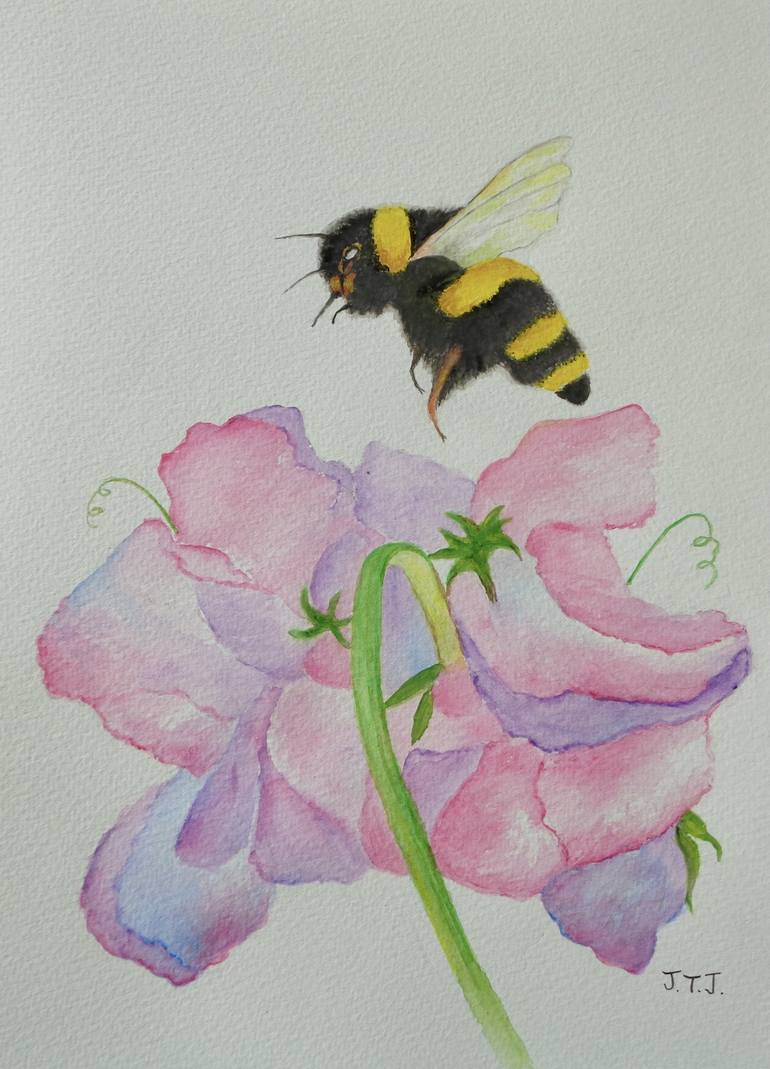






VIEW IN MY ROOM
Bumble Bee and Sweet Peas Painting
United Kingdom
Painting, Watercolor on Paper
Size: 11 W x 15 H x 0.1 D in
Ships in a Box
Shipping included
14-day satisfaction guarantee
About The Artwork
This painting was inspired by watching the bees pollinating the flowers on a warm summer afternoon in the garden. This is one of a new series of watercolour bee paintings. Bees are pollinators vital to our food chain. One third of the food we eat would not be available if it were not for bees. The dramatic and unexplained decline in the population of these insects is worrying for everyone, not just the conservationists. Fewer bees means less pollination, which results in less honey and fewer plants. Bees are in danger of disappearing from our environment. Farming practices continue to disturb the natural habitats and forage of solitary and bumblebees at a rate which gives them little chance for re-establishment. The honey bee is under attack from the varroa mite and it is only the treatment and care provided by beekeepers that is keeping colonies alive. Most wild honey bee colonies have died out as a result of this disease. All bees are in danger of being poisoned by insecticides. Materials used: Painted on heavy quality, Bockingford 300 gsm watercolour paper with artist colours. the painting will be sent quickly packed flat in a cardboard reinforced envelope to prevent creasing.
Details & Dimensions
Painting:Watercolor on Paper
Original:One-of-a-kind Artwork
Size:11 W x 15 H x 0.1 D in
Frame:Not Framed
Ready to Hang:Not applicable
Packaging:Ships in a Box
Shipping & Returns
Delivery Time:Typically 5-7 business days for domestic shipments, 10-14 business days for international shipments.
Handling:Ships in a box. Artists are responsible for packaging and adhering to Saatchi Art’s packaging guidelines.
Ships From:United Kingdom.
Customs:Shipments from United Kingdom may experience delays due to country's regulations for exporting valuable artworks.
Have additional questions?
Please visit our help section or contact us.
United Kingdom
Jean Tatton Jones has sold paintings internationally to individuals and to corporate groups, including medical and dental centres, restaurants and offices. She graduated from a British university and has also won awards for poetry which has been published in North America, Europe, India and Britain. She uses a variety of art media including watercolour, acrylic and oil and her work is inspired by nature including landscapes, sea views, creatures, flowers and abstract design. Some of her recent work has a dream like quality and is born from our rich cultural heritage of myths, legends and poetry which evokes feelings of mystery and enchantment.
Thousands Of Five-Star Reviews
We deliver world-class customer service to all of our art buyers.
Global Selection
Explore an unparalleled artwork selection by artists from around the world.
Satisfaction Guaranteed
Our 14-day satisfaction guarantee allows you to buy with confidence.
Support An Artist With Every Purchase
We pay our artists more on every sale than other galleries.
Need More Help?